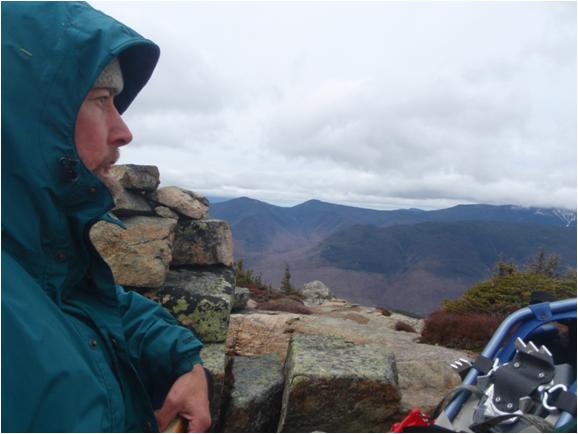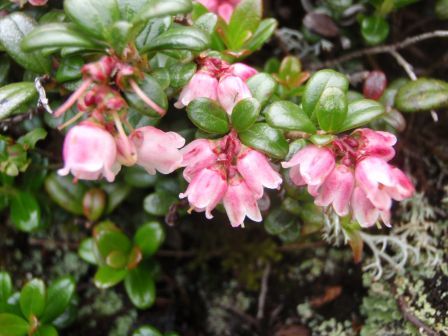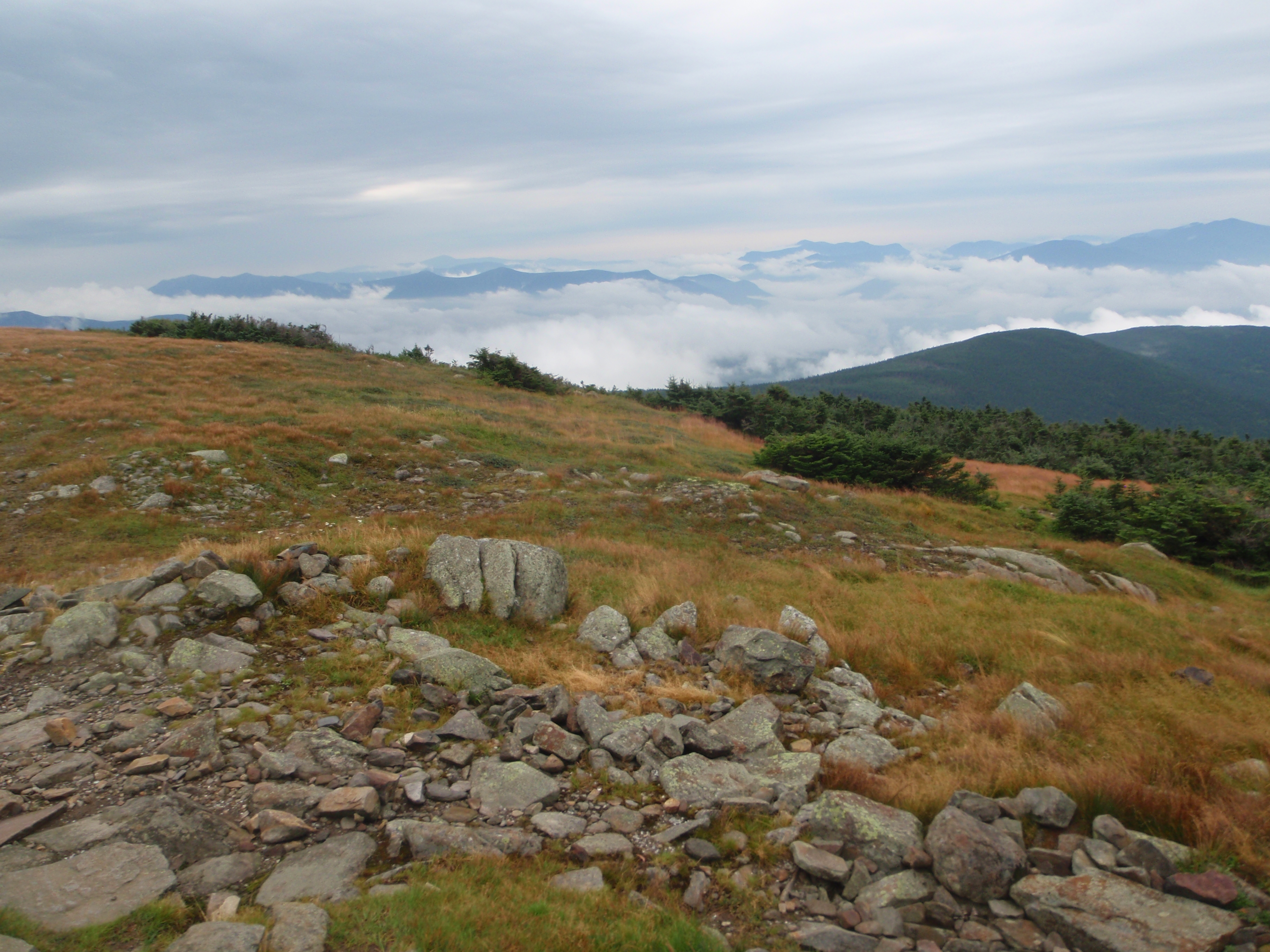
Bondcliff in New Hampshire\'s White Mountains
Much of the work I have done in recent years involves characterizing plant communities above treeline on mountains in the northeastern United States, primarily in New Hampshire and Maine. This involves a lot of survey work -- simply recording what plants are present on a mountaintop and how much there is of each species. It's basic ecological work. While not glamorous, this work is essential so that we will be able to tell in the future whether these communities are changing. Basic surveys establish baseline information -- what's present at a given time in a particular place. In 30 or 40 years, someone will be able to come back and do another survey and we'll then know whether the community has changed. And if we also have information on environmental conditions and how they have changed, we might be able to offer some theories about why our communities are changing. Without good baseline information, we can't say anything.
Part of the reason that biologists are concerned about alpine plants in the Northeast is that we have little of the mountaintop habitat that these plants need. These plants are unusual in the area just because the conditions they need are uncommon. To see some of these plants where they occur outside the region, we would have to go to Labrador or Alaska or northern Europe.
To the right are several of the plants that occur only in the arctic and in alpine habitat. These were photographed on Mount Washington in New Hampshire, which has the largest expanse of alpine habitat in the eastern United States.
In truth, part of the reason that biologists like to work on mountaintops is that they are very beautiful and special places.

The most recent survey on which I worked was done with Nancy Slack, a plant ecologist from the Sage Colleges in Troy, N.Y. Over the course of several years, we surveyed snowbeds and rill communities in the Alpine Garden on Mount Washington. Snowbeds are the areas above treeline where the snow remains latest into the spring — into late June in some cases. All plants in the alpine have a short growing season because the snow comes early in the fall and buries everything through the winter, staying into the spring. But snowbed plants have an especially short growing season because they are buried even longer than other alpine plants. The advantage of this is that plants buried under the snow are not subject to the extreme cold and fierce winds that make life difficult in the alpine. One result of this extra protection is that we find plants in the snowbeds that don’t otherwise occur in the alpine — plants that are common in low-elevation forests like Maianthemum canadense (mayflower), Clintonia borealis (blue-bead lily) and Coptis trifolia (goldthread). Joining these species are others that are true alpine species, which are never found

Vaccinium vitis-idaea
at lower elevation but which also occur in the arctic tundra, including low blueberry bushes. Rill communities are those where the ground stays wet through the year because they have small streams running through them. Snowbeds and rills have attracted the attention of botanists for a long time, but we wanted to record quantitative data in a way that would be useful in the future in determining whether the communities are changing at all. In particular, we wanted to obtain information on mosses, liverworts and lichens, which traditionally have been thought to be of little importance in these communities, while abundant elsewhere in the alpine.
We found that bryophytes and lichens are less abundant than flowering plants in the snowbeds and rills but that a surprising number of species occurred in one place or another and the bryophytes, especially, were occasionally quite abundant in rills.
The most important purpose of the survey was to record what's there now so future biologists will be able to figure how snowbeds and rills have changed: What species have increased? Have any disappeared? Without good baseline information, these questions can't be answered.
The full report on the study can be read here:

Mount Moosilauke